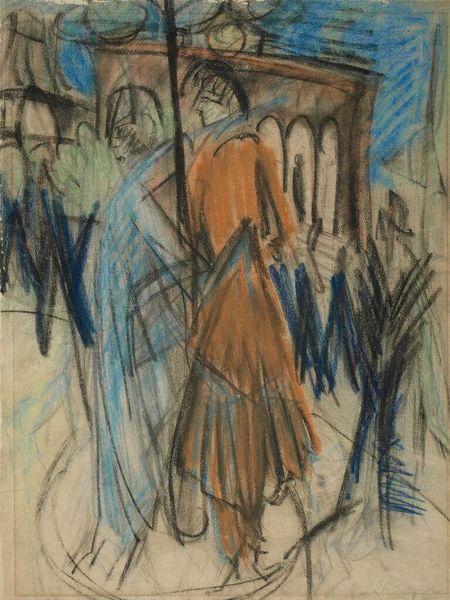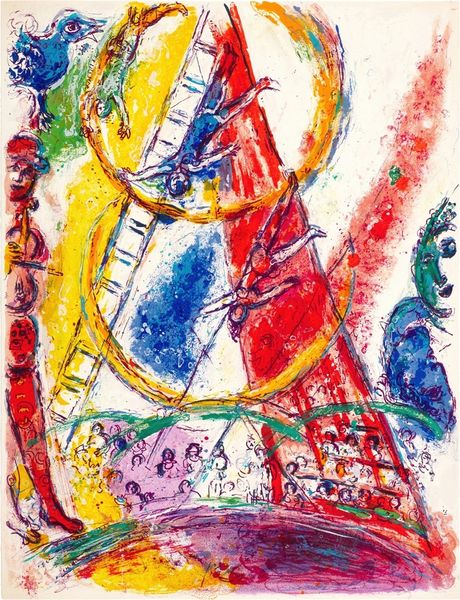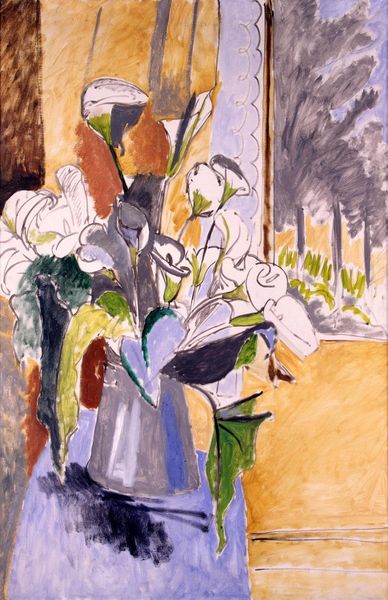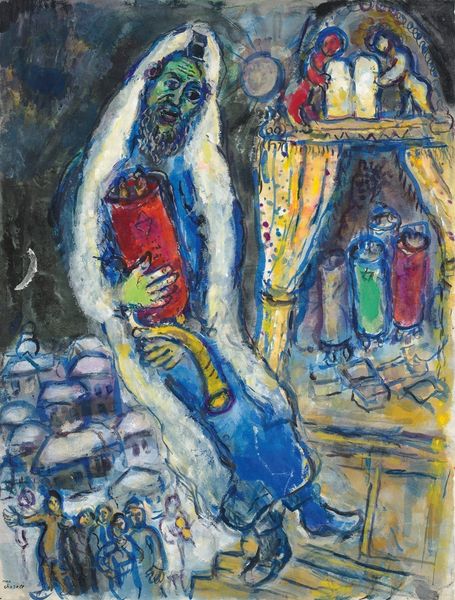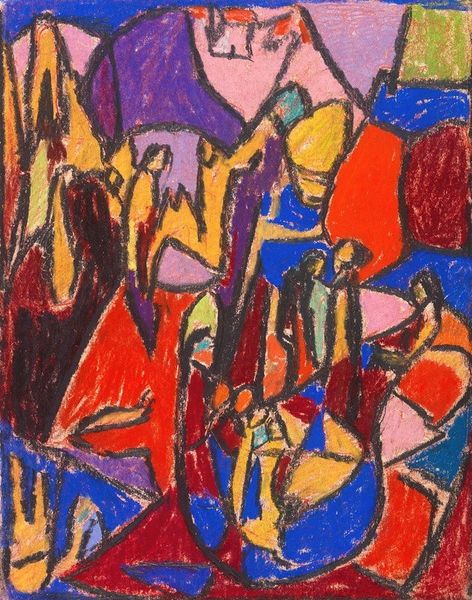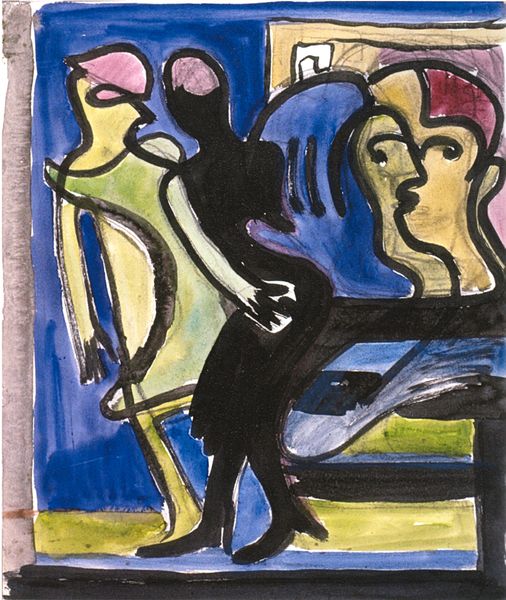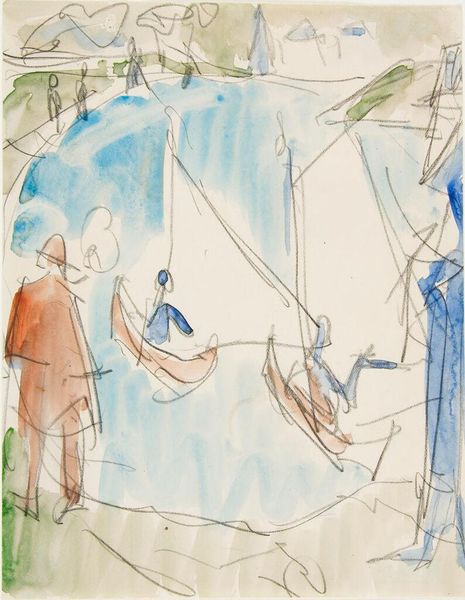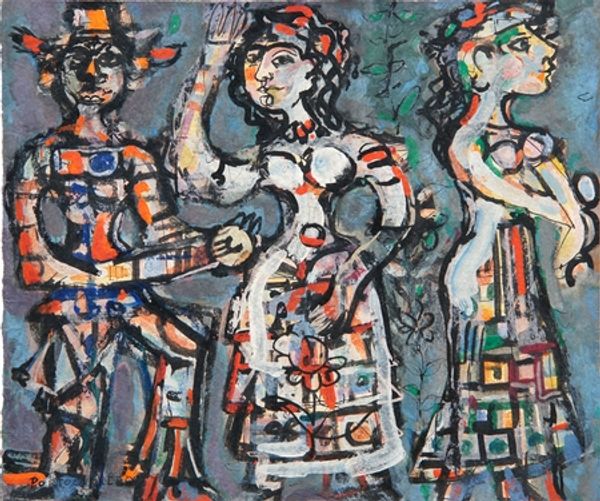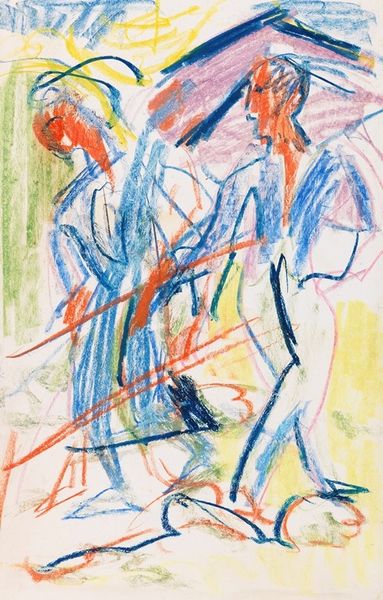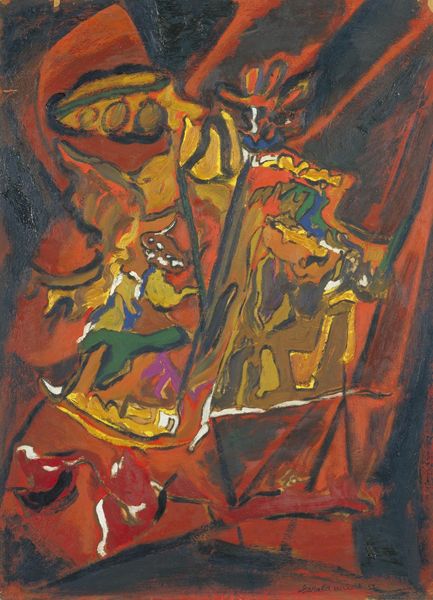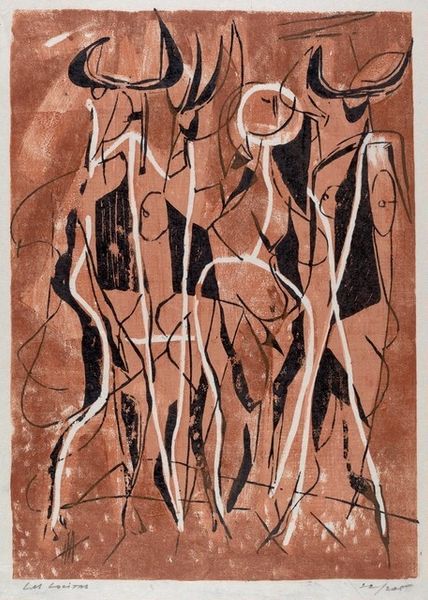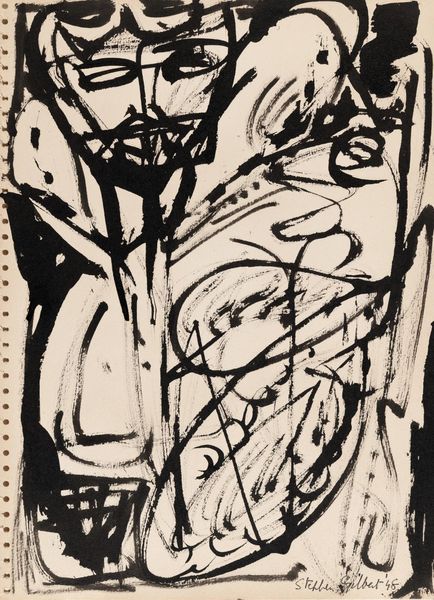
painting, watercolor
#
portrait
#
figurative
#
painting
#
landscape
#
figuration
#
watercolor
#
expressionism
Copyright: Public Domain: Artvee
Curator: Ernst Ludwig Kirchner's watercolor and crayon piece, "Bäuerinnen am Brunnen auf der Stafelalp," or "Peasant Women at the Well on the Stafelalp," created around 1919, offers an intimate look into rural life in the Swiss Alps. What strikes you immediately about it? Editor: The rawness. The hasty, almost scribbled lines give it an unfinished feel, but also a startling immediacy. There’s something intensely vulnerable about how these figures are rendered, or perhaps I should say not rendered. Curator: Vulnerable is a fascinating take. Kirchner's style during this period, though still Expressionistic, moved towards a simplification. He was recovering from a mental and physical breakdown from his WWI experiences. I wonder if we see this in the subjects of his post-war artworks. He spent considerable time in the Alps as he recuperated from the war trauma. He found refuge, and likely something cathartic in observing the mountain people. Editor: That context makes it so powerful. Considering that backdrop, the simplification you mention, it reads less as carelessness and more as… bearing witness to essential labor and connection with a specific landscape. Are those figures actually getting water at the well? The well itself is strangely ill-defined. Curator: It is, isn’t it? I wonder if the well itself is somewhat beside the point. The central focus here might well be those interactions between the women set against that vivid green landscape. Kirchner had a deep interest in representing authentic rural existence. I interpret this is not so much a factual depiction but an embodiment of his longing for a simpler life rooted in community. Editor: So, he is attempting to bridge his complex trauma, a highly disrupted modern experience, with an imagined idyllic past in these images of rural subjects? I appreciate your thinking on this. By stripping away the detailed visual specifics of these peasant women’s lives, is he hoping for a more empathetic portrayal, one more broadly encompassing the essence of ‘woman,’ and labor, outside modern chaos? I'm reminded of similar debates that occurred in artistic circles after the 2nd World War. Curator: Yes, perhaps the universality of these images, by its stripping back, offered the viewer the capacity for direct engagement, just as Kirchner sought solace within its framework as well. He shows the rural lives without romanticizing it in his expressionistic style. His goal was always about feeling. Editor: This definitely impacts how I'll approach Kirchner moving forward. It is tempting to label his style as simply raw or unfinished without thinking more about the societal forces behind such portrayals. Curator: Agreed. I am forever struck by the fact that despite the heavy historical currents that undoubtedly shaped this painting, "Bäuerinnen am Brunnen auf der Stafelalp" manages to quietly offer us moments of beauty and healing if we give it the chance.
Comments
No comments
Be the first to comment and join the conversation on the ultimate creative platform.
